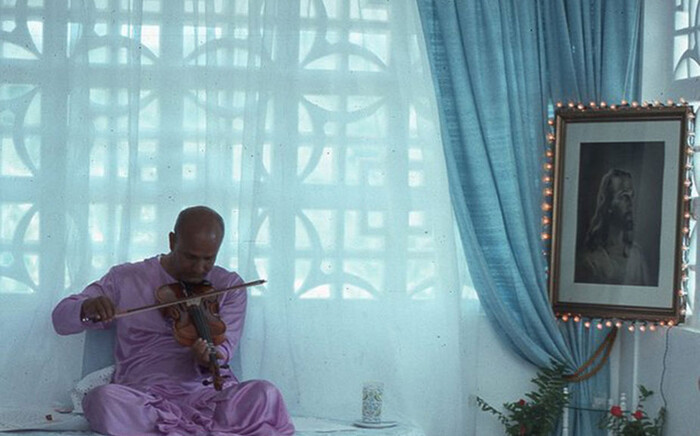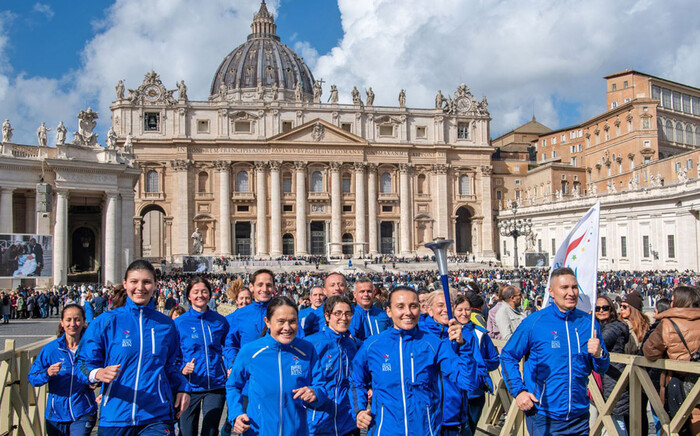
Inspiration-Letters 13
Travels with Sri Chinmoy
Dear Reader,
 Sri Chinmoy taught me to love traveling, because he taught me to love the journey more than the destination.
Sri Chinmoy taught me to love traveling, because he taught me to love the journey more than the destination.
I remember the first time I went to Germany, to visit my sister, I rode very third-class on British Airways, during a big trans-Atlantic storm (or so it seemed). I had a window seat and the two seats to my right were occupied by a Basque couple who were returning to Spain.
During most of the six-hour flight, I read from Somerset Maughm’s Of Human Bondage, one of my all-time favorite books, I also listened to Mountain Silence’s wonderful CD, Harmonia Coeli/welcome, which is a collection of songs by Sri Chinmoy, arranged by Mountain Silence, dedicated to the Savior Christ.
I had never been to the Old World before. I am Jewish, and thus my connection to the Eastern Hemisphere includes not only Europe, but also western Asia and north Africa.
I got such a tremendous thrill when we flew over Ireland. Ireland looks so tiny from above! Yet it is so beautiful as seen by plane- a picture perfect map of green grids separated by little fences, with trees everywhere.
“Mi primera vez en Europa…” I said to my Basque friends.
“¿Estas emocionado?” the young woman asked me.
I told her, yes, it was quite a wonderful experience for an American who had never traveled at all to see Europe for the first time.
Europe!
What a strange, alien place for a Yankee!
Perhaps the cruelest shock for me, when I finally arrived in Germany, was that there are millions of people in this world who don’t speak a lick of English and they are FINE. They can live, breathe, work, shop and play without knowing a single word of the noble Anglo tongue, refined through centuries of conquest by the Scandinavians and the French.
“What’s früstuck?” I asked my puzzled but obliging German waiter, “I want breakfast!”
I have always loved the gentleness and the simplicity of the German people. I admire its ancient history and deep cultural roots. And, most of all, I love the language. My German is totally atrocious, but I admire German poetry. It’s so easy to express deep feelings in German, and to sound like you really mean it.
A few years later after my first trip to Europe, I was privileged to travel with Sri Chinmoy and my fellow disciples on the legendary World Harmony Concert Tour which the Master offered in Switzerland and Germany.
My sister lives in Germany, and she accompanied me to the Berlin concert that Sri Chinmoy gave. It was my sister, actually, who took me to see Sri Chinmoy for the first time in Philadelphia, in 1996, and I will always be grateful to her for that.
I enjoyed all the concerts from that Tour, but the concert that Sri Chinmoy offered in Dresden really moved me. As I said, I am from Philadelphia, the oldest city in America. And Dresden has its own sense of history. We know how terribly the city was bombed during the war, but what makes the city special is an understated aura of peace. I felt that I could go to its beautiful park, by the river Elbe, and just meditate for hours and hours and be perfectly happy.
I didn’t get to see Dresden’s famous church or world-renowned art collection, unfortunately. But the concert was special. There was an electric thrill in the air that made my skin tingle. I sat in the front row, and I just smiled and smiled.
And the people who came were so receptive! They all dressed up very nicely and at the end of the concert, they simply sat there in respectful, reverent silence. We all sat in silence for a long time. I never had that experience before or since.
To very loosely quote Nayak’s excellent piece on the Sri Chinmoy Inspiration Group, Sri Chinmoy has now merged with “the incorporeal Dream of God”. I like that wording very much. In connection with Sri Chinmoy’s universal Vision, I’d like to quote, unofficially, from Sri Chinmoy Answers part 37, where he speaks about the spiritual quality or significance of the wind:
“The wind has many, many spiritual meanings. Let us say you are in a park or an open space and you are doing something serious. Then the wind comes. From the human point of view, it ruins everything. But then again, it depends on how we take it. In my case, the wind gives me tremendous joy. On the one hand, we can say that the wind makes us feel that the entire world is very small. It starts blowing in one place and then it goes to another place. So far and so fast it goes!” —Sri Chinmoy
I’d like to conclude with one of my favorite poems, also by Sri Chinmoy, from Transcendence-Perfection:
O VOYAGER OF TIME
“O voyager of time,
Onward you proceed
And offer to the world
Your achievement-light.
Much have you to discover;
Much have you to offer,
O voyager of time.”
Sri Chinmoy—Poem #804 from Transcendence-Perfection/welcome
Thank you, Sri Chinmoy, for lifting your children up, to see the vastness of the infinite Blue.
With deepest gratitude to my globe-trotting and ever-inspiring spiritual family,
Mahiruha Klein/welcomeEditor
Title photograph: Pavitrata Taylor
Inner And Outer Journeys/welcome
 Years ago I used to compete with a good friend over which of us had visited the most countries. Like children, with furrowed brows and triumphant cries of discovery we pored over current and former passports, deciphering entry stamps and visas in strange languages to determine who was the most traveled. One day my rival departed alone for a final journey and to a faraway place from which she would never return. But truth to tell, before that lonely time I trailed by a mere two countries, inventing obscure South Pacific island nations to draw level. She would pounce on my passport, demanding verification and entry/exit stamps, but I would wave my hand dismissively and insist that none were required. The nations of Tobulu and Fujilau, I explained, didn’t bother with such trite formalities, and who would want to stay on those tiny sun-scorched atolls for more than a week anyway?
Years ago I used to compete with a good friend over which of us had visited the most countries. Like children, with furrowed brows and triumphant cries of discovery we pored over current and former passports, deciphering entry stamps and visas in strange languages to determine who was the most traveled. One day my rival departed alone for a final journey and to a faraway place from which she would never return. But truth to tell, before that lonely time I trailed by a mere two countries, inventing obscure South Pacific island nations to draw level. She would pounce on my passport, demanding verification and entry/exit stamps, but I would wave my hand dismissively and insist that none were required. The nations of Tobulu and Fujilau, I explained, didn’t bother with such trite formalities, and who would want to stay on those tiny sun-scorched atolls for more than a week anyway?
But among our authentic visited nations—the number was a staggering fifty-six versus fifty-four—forty-one were in the company of Sri Chinmoy, and among the transcendent accomplishments of this hugely traveled global master must surely be a mention of ‘most journeyed sage’ or ‘spiritual explorer par excellence’. Not to mention ‘most widely travelled entourage of disciples’.
These peregrinations spanning forty-seven years and six continents and scores of unlikely places have been filled with wondrous days and personal revelations, moments of insight and learning and the transmission of sacred knowledge and we each have our many stories. And beneath those many different cultures we visited—the beautiful, variegated hues of humanity, each uniquely molded by landscape, climate, time and isolation; by inner currents of national destiny; by determinations of karma, soul, God, into their multifarious aspects—there was the discovery of the oneness of our race, the essential sameness of the human experience. Same tears, smiles, longings, loves; six billion of us unified by heart and spirit and the bittersweet universals of life.
But perhaps the ultimate value of all this journeying must be measured by the inner markers and milestones—how much inspiration, happiness, understanding did we derive; how much progress did we make; how much closer to Guru and God did we become; how much did the soul blossom?
The ‘I’ observer dominates all experience, occupies the epicenter of consciousness and accompanies all our wanderings, colouring in everything of life with the brush strokes of personal mood, emotions, mind and predisposition, the unliberated things in ourselves that so prevent our clear perception. Everywhere we go we carry this with us, for as the Greek poet Cavafy wrote ‘No ship exists to take you from yourself’. Knowing this at last, we turn our gaze within, the goal of happiness now a spiritual quest, the conquest of ‘I’ and a journey of awakening.
The journey from feeble man to God-man
“God has a living Breath and the name of that Breath is man!”
– Sri Chinmoy.
For one brought up with the classical view of the unbridgeable gulf between man and God, the concept of realising God, or more startlingly, becoming God, is revolutionary. Found everywhere in Sri Chinmoy’s writings it is one of the most breathtaking assertions in all of spiritual literature, though its slow and steady flowering reality, the truth of it, can be tested and eventually glimpsed and finally won by all sincere meditators. “Man and God are eternally one,” Guru writes. “Like God, man is infinite; like man, God is finite. There is no yawning gulf between man and God. Man is the God of tomorrow; God, the man of yesterday and today.” (Sri Chinmoy, Yoga and the Spiritual Life)
Applied to everyday human life—karma yoga—this concept is wonderfully developed by Sri Chinmoy into guidelines of behaviour and attitude both for oneself and in one’s relationship with others. Consider, for example, Sri Chinmoy’s beautiful words to restaurant owners: “While you are cooking, you have to feel that you are cooking for the supreme Guest, the Supreme Himself, who will eat in and through the hundreds of people who will come into the restaurant. Do not think of the people who are going to eat as human beings . . . The Supreme is the supreme Guest, and as a guest He is coming to you in hundreds of human forms.” (Sri Chinmoy, The Blossoming Centre Garden)
And about oneself: “God is constantly taking birth at every moment inside you—in what you say, in what you do and in what you become . . . With each new thought, each new idea, you can feel that a new God has dawned, a new God has taken birth.” (ibid)
Sri Chinmoy’s radiant personal example—he was a living embodiment of man as God, God as man—everyday reminded us, and will forever remind us, of the fundamental truth of our own God-becoming. He was the supreme proof that God exists, for us the great personification of divinity, and his legacy—especially his published writings—insists on the infallible truth of our own ultimate godliness.
In the many trials of our lives he was always our compass, always realigning our wayward steps back to the great pole of liberation. Remember, he is still telling us, to see and feel the divinity within yourself and always see it in others. In Sri Chinmoy Answers, Part 1, he tells us of his supreme faith “in each and every human being because I clearly see each and every one as the real God… Sometimes when I meditate on you, my disciples, in my own highest divine consciousness, I definitely see you as my Lord Beloved Supreme. I do not see you as human beings with human imperfections. No, at that time your outer bodies disappear and your souls I see as the most perfect representatives of our Lord Beloved Supreme. That is the time when I get the utmost happiness. I swim in the sea of ecstasy.”
The journey from couch-potato carnivore to tofu-lover athlete
Adopting a vegetarian diet and a running lifestyle may have been easy for you, but I was brought up with a cupboard full of firearms, a freezer packed with venison steaks and illicitly obtained trout, and a gun-toting manly father who would have had a coronary at the thought of a vegetarian son. My lifelong herbivorous wife Subarata—she outraged her alcoholic father by giving up ‘the drink’—encouraged me in this aspect of my journey with a barrage of ‘not chicken’, ‘not beef’, ‘not turkey’ cuisine and countless reproachful glances, but even on our frequent six day mountain expeditions with a few of her rabidly vegetarian friends I would conceal a few salami sausages in my backpack, crawl from the tent under late stars to enjoy my furtive addiction.
But how malleable we human beings are, a plasticity that enables our endless resculpting into something new. In our essence not rigid and hard and static but ductile, responsive, polymorphic, polypotential. Guru’s guidelines for disciples have launched seven thousand vegetarians into orbit and a running culture that has brought dynamism, physical wellbeing, mind-body transcendence, intensity, willpower, self-discipline and lots of zing to our lives and catapulted a special group of souls along this PH.D. spiritual path to a much closer proximity to God.
In these times of physical decline and desk-bound torpor our get-fit, no drugs/alcohol/tobacco/meat culture is a flag bearer of the ‘body temple’ philosophy and recognises the need to perfect every part of our humanness to obtain spiritual excellence. This journey confers clarity of mind, prana, the slow refinement of consciousness, the calming and purification of vital energy, new and subtle depths in meditation.
An outer journey memory
Some people say that a poor memory is a sign of stupidity, but having a poor memory myself obliges me to take a more generous view of this condition. The phrase implies also something negative and defective, but we poor memory types see it as a pleasing capacity to erase all of the humdrum baggage of life while retaining a discernment for the few things that are actually important. We’re happy to salute all our friends whose enviable clarity of mind and power of recall is so remarkable—their life like a travelogue you can rewind and review—but for us ‘alternative memory’ types time itself is not chronological, an orderly attenuation, but a fascinating jigsaw puzzle of disconnected pieces.
That Christmas trip in Malaysia—when was it?—where did we stay?—what cities did we visit, and whom did we room with? I haven’t the foggiest. But I remember the colours of an evening sky, a morning prayer, a serene stone carving in a temple garden that touched my very soul. Or something Guru said that might have lingered, an impression that sank deep into our consciousness, embossed itself onto our hearts more deeply than a hundred city tours or sun drenched beaches. Single defining incidents tattooed into memory, gold nuggets disembedded from the dull strata of surrounding banalities—the exactitudes of time and place—and hoarded in the treasure chest of things past. Here memory working like a random association test, throwing impressions up into bas-relief.
One such trifle lingers from our 2002 trip to Vietnam. In Ho Chi Minh city I roomed in the Rex Hotel with an ailing friend who insisted on leaving a large bowl of diced garlic by his bedside, frequently tossing large clumps of the foul smelling stuff into his mouth to combat some pernicious local bug. The room was unbearable and forced me into longs walks around the neighbourhood and late night perambulations up and down the hotel corridors, breathing great lungfuls of fresh air before plunging back into the Dante-esque underworld of gloom, garlic and groans from He of the Foul Breath.
Even the cleaning maids, normally smiling and affable, whizzed around the room with incredible perfunctoriness and speed, noses wrinkled in disbelief, and could be heard escaping down the hotel corridor afterwards jabbering excitedly in their unfamiliar vernacular.
Finally fellow roommate Snatak and I confronted the bedridden one and he accepted our stern ‘The garlic must go!’ ultimatum with a reproachful silence, gazing at us with forlorn, puppy-dog eyes.
Here in Vietnam I made a halfhearted attempt to learn a little of the language and befriended the hotel receptionists to practice and learn. They would teach me a useful phrase each morning but my suspicions about my pronunciation were quickly aroused when I saw them giggling hysterically, hands pressed politely to their mouths, as I walked off to breakfast and I knew my ‘Hello, how are you today?’ was probably ‘Hello, how is your nose today?’ or similar.
In the streets there were many legless and maimed victims of landmines and lots of parentless, homeless children who survived by imploring the few tourists for money or selling cheap bric-a-brac, coconuts and trinkets. Mridanga and I were adopted by two immensely sweet English speaking children who possessed both a childlike innocence and a knowledge of survival far beyond their years.
Once, returning from a stroll, I was about to leave the street for my room when Guru pulled up in his car, spotted me and called me over. He quite spontaneously requested me to put on a ‘spectacular play’ about the life of Christ and right there on the curb rolled out a detailed outline of how long, who, when, as though the subject had been uppermost on his mind for days. The Canadian disciple Dhiman was to play the part of the devil, Priyadarshan should be Christ, I was to be director. It was quite extraordinary in its unrehearsed spontaneity and explicit attention to detail—Guru unveiled a whole cast of characters and costume details and directions right on the spot. I wrote the play and co-opted my reluctant stars and it all went well.
Dhiman had little interest in memorising lines but roared, bellowed, foamed at the mouth and was generally very intimidating with his black cape, fiendish accessories and red-painted eyes. Priyadarshan the Christ was composed, regal, unflappable and hugged the satanic Dhiman at the end, an unscripted surprise touch that conveyed some sense of cosmic reconciliation between darkness and light and won thunderous applause. Guru was looking at us with a big smile on his face, pleased at this unlikely collaboration of disciples.
Of New Zealand I have many lovely, random memories. Guru was so happy lifting the 1,000 lambs and 100 hundred cows! Who would have imagined him wandering so contentedly about in the muddy yards with the animals, leaning familiarly on the old farm fences and gates, relaxed as can be. When the boys pushing the reluctant cows up the chute onto the lift platform became thoroughly besmeared from head to toes in dung, Guru laughed and laughed in delight. Guru called Shardul over and said, “Shardul, you will win the world beauty contest!” In the interviews taken at these times, Guru is in his usual transcendental mood but looking more than usually satisfied, gratified, content.
One day we must all undertake the great task of preserving our countless memories of our time with our Guru before they are lost irretrievably. Imagine how avidly we would devour some newly unearthed manuscript describing a real day in the life of Christ or the Buddha, written by one of their own disciples! “Everything of mine will end, I know,” Guru wrote in one of his compositions. But he will leave his Transcendental consciousness on earth, and also his songs, for “Inside my songs, sleeplessly blossoms my Lord Supreme.”
Jogyata Dallas
Auckland, New Zealand
Queens Revisited/welcome
 One never knows when the last time will come, but first times are remembered forever. Like first snow, they have that crystalline, spotless, pure quality, which never seems to wither, but rather increases its brilliance over time. I can remember my first day at school with surprising clarity (running into my mother’s arms at the end of the day, feeling her pride, her love). I also remember my first day in secondary school (missing the opening speech by getting lost on our bicycles on our way there) and my first soccer match (losing 3-0, my best friend in tears). A first time is always magical.
One never knows when the last time will come, but first times are remembered forever. Like first snow, they have that crystalline, spotless, pure quality, which never seems to wither, but rather increases its brilliance over time. I can remember my first day at school with surprising clarity (running into my mother’s arms at the end of the day, feeling her pride, her love). I also remember my first day in secondary school (missing the opening speech by getting lost on our bicycles on our way there) and my first soccer match (losing 3-0, my best friend in tears). A first time is always magical.
And pure magic is what I remember from my first time in New York visiting Sri Chinmoy during August celebrations. These memories are beautiful fragments of light, images framed in silver and gold, miniature documentaries of the soul.
I remember arriving at Aspiration Ground in a blazing midday sun and Guru answering questions of disciples. The theme was humility and humiliation. I distinctly remember him saying it is not bad being humiliated once in a while, since it curbs the ego. The first words of wisdom I heard Guru speak on the court.
Of course I also remember that overwhelming aura of peace, which washed over you like a wave of silent ecstasy, endless and irresistible. I remember a flowerlike fragrance, sweet, subtle, unearthly, emanating from that sacred place, driving the heart mad with joy. I remember laughter.
The first time I helped bringing in boxes of Prasad stands out in my memory, since it was the first time Guru spoke to me directly, yet perhaps not in a way I had secretly hoped and longed for. My boxes were the last to be placed on the ground. In a silly and overzealous effort I decided to shift the other boxes around to make all the heaps look equal and orderly. His voice suddenly boomed out of infinite silence: “Oi, what are you doing? I liked it the way it was!” I, who had hoped for his high praise or an approving smile, wanted nothing more than to sink straight through the ground or to evaporate into thin air. Those options sadly unavailable, I stood rooted to the spot like a frightened rabbit and then sort of scuttled away. It’s not bad being humiliated once in a while. Indeed. Cosmic consciousness was operating smoothly.
And so it always was around Sri Chinmoy. You had the feeling of being an eternal child, playing in an eternal garden under his loving eye, while at the same time all you needed to know about yourself, about your part in the game, was somehow communicated to you through a thousand different channels—and every time you recognized his voice. Such was his grace.
I remember playing soccer with the boys in the summer’s heat. I remember intense play practices with an amateur crew showing its professionalism in its props, costumes and staging. I remember running the obligatory morning laps around Jamaica High and—o bliss—heaping warm muesli in a small paper bowl in Goose Pond park afterwards. I remember a sunny afternoon on Aspiration Ground when Guru had all the guards try a ‘clean and press’ from the ground with a 90 pound dumbbell. Excitement rippled through the crowd. Cute little games, which transported you back to your childhood days.
Everywhere I turned I felt the thrill of belonging to this family of souls, a unique gathering of spirits under his great wings. It was like coming home. The days were full of joy. The nights were full of peace. The mornings were full of freshness and newness. It felt like the world had just been born. Only when I got back home I truly and fully realized how magically beautiful it all had been. The real world stood before me like a roaring tiger. But I had felt the peace of the lion.
I remember a trip into Manhattan, all by myself. I felt obligate to pay the island a visit, if only to appease my parents and class mates that I had actually gone out and seen something of the real New York. So I did Wall Street, Central Park, Times Square, 5th Avenue… There is a picture of me standing in front of the Manhattan skyline, the twin towers still looming in the back. It was 1999. Yet among the skyscrapers I felt empty and oddly out of place the whole time. When I got back to Queens I realized the sheer foolishness of going out to look for a speck of light, when I could have stayed to bathe in an eternal sun. It was the last time I traded the precincts of the tennis court for a touristy escapade. All you needed was there, between the dusty gravel and the white prayer flags flapping cheerfully in the breeze.
Until Sri Chinmoy left the body I paid 16 visits to his residence in Queens, New York. In my memory they epitomize a sun-drenched, endless afternoon, a spiritual and blissful tea-party with its ever-same and ever-changing patterns, a draught of the soul’s nectar, an eternal day in Heaven.
I remember.
Abhinabha Tangerman
The Hague, The Netherlands
Journey To A Lamb's Heart/welcome
Everybody has an uncle who is a farmer. Everybody lives with memories of Christmas holidays on the farm: the blue, endless sky; the lark arising into the heat, its song a boundless plea to the universe; across green hills the sound of sheep, the call of cows; long treks over the hills; swimming in the river; dusty farm roads between gorse hedges.
I visited Uncle Digger at the rest home this Christmas. He shuffled in on slippered feet and sat in his armchair. Did he remember still the slap of a cow’s tail across his face in the gloom of the early-morning milking shed?
Uncle Digger and Aunty Moira had farmed at Edendale—a land, as its name suggested, half way between Hobbiton and heaven, a land of green: the Southland plains, lush with verdant growth. In Canterbury the sheep stand all day gnawing at the meagre, yellow veldt: in Southland they sit deep in bountiful grass. Plump, contented, they occasionally amble through the buffet for a little grazing before retiring beneath a tree to proclaim the goodness of God with deep, contented bleating.
In 1974 we holidayed in rural Otago.
Where do ideas come from? From the casual and frivolous whimsies of the mind? From the profound, tidal promptings of the depths of the soul?
We tramped over the tawny Otago hillsides studded with sheep. People who have the misfortune to live in other countries love to giggle and be amazed by, and ever-so-slightly scornful of, the number of sheep in New Zealand. Three million people: seventy million sheep they used to exclaim as if this were something unusual.
As I sweated my way over those hills—my spindly, nine-year-old legs keeping up with my striding siblings and parents—it seemed perfectly natural to me that there were sheep around. The deep throaty bleat of ewes would ring around the hills, answered by the plaintive call of their young—by that time of the year, stocky and round-faced yet still with the innocence of lambs.
Like most animals that know humanity, sheep are shy of humans—get too close and they trot on nimble hooves away or sweep off in a flock to a safe distance.
The idea arose in me that one should be able to walk quietly up to a sheep and pat it in a friendly fashion on the head, scratch it behind the ears and offer it one’s affection and goodwill.
As our holiday progressed I tried to put this idea into practise. Not surprisingly I tried in vain. No matter how slowly and gently and with what friendly intent I approached any given sheep, it would gallop off when I got too close.
‘Barnaby wants to pat a sheep’—word soon got round the family with no doubt some degree of perplexity.
We ended up that year on Uncle Digger’s farm for Christmas. Uncle Digger was my godfather. I had a huge respect for Uncle Digger—slow-moving, slow-talking, a man who mowed his hay leaving stands of grass where he knew birds were nesting, a kind man, a generous man, a man who hated to leave his farm and be away from his cows.
‘Barnaby wants to pat a sheep,’ they told him. He went out to the ram paddock beside the house and cut an individual out of the flock and manhandled it into a pen. The whole family gathered around and Uncle Digger gave us benighted ‘townies’ a short dissertation on wool and we all got to touch the sheep, to feel its wool, to ‘pat’ it. It was the first time I had ever touched a sheep and I tried not to cry when I thanked my god-father for what seemed, from my tiny perspective, like a lot of trouble to have gone to. But it wasn’t my wish fulfilled. The sheep had remained an object of curiosity, an alien object of interest cut off from us by our human superiority. We had not participated in its sheepness, we had not met it as a fellow creature to be recognised as a value in itself, not an individual to be offered our esteem.
All too often sheep are considered with a certain contempt—thought to be foolish and too prone to following each other. In contrast to this, my mother used to tell of the sheep on her uncle’s farm that would sit in the shade under a plum tree and slowly eat all the windfall plums within reach, and, when finished, delicately spit out the plum stones into a neat pile. A story like that, I thought, showed an appropriate respect for the ovine race. For sheep deserve our respect.
There was someone who perhaps shared my view, though it was to be many years before I met him and traveled with him.
It was Sri Chinmoy who once said, “If I can identify myself with the heart of the lamb, then I feel I am coming closer to God because God has very special fondness for lambs.’
The sheep, the lamb, is an image of sweetness, of purity, of innocence. Sri Chinmoy went on to say, ‘we all want to be God’s lamb-children.’
I have traveled with Sri Chinmoy to some distant places—places far from my normal realm of life, both geographically and spiritually, but the journey that touches me most is the one on which he took me to my own home, my own country, my own heritage and showed it to me afresh. It was T.S. Eliot who wrote in Little Gidding:
We shall not cease from exploration
And the end of all our exploring
Will be to arrive where we started
And know the place for the first time.
On November 28, 2002, we bounced up the farm road in John’s car—like every New Zealand farm road I had ever bounced up on long-ago Christmas holidays.
Sri Chinmoy’s Lifting Up the World with a Oneness-Heart recognised individuals who had inspired and uplifted humanity. Sri Chinmoy lifted these individuals overhead using a specially constructed platform in a symbolic gesture of oneness with their uplifting achievements.
When Sri Chinmoy traveled to New Zealand in 2002 he requested that we organise for him the opportunity to lift, not great or famous New Zealanders, but 1,000 lambs.
And so it was that we found ourselves that blue November day lost in the green heart of rural New Zealand, the sound of a mob of sheep ringing in our ears.
To lift overhead one thousand lambs was to act out a concept that was philosophical and spiritual in its profound depths. On the other hand, it involved utterly tangible and grubby farm animals—40 kilogram lumps of mutton and wool and a life all their own. Logistically it was a big job, but it was the opportunity to play a part in that journey to the sheep-filled heart of New Zealand that makes it, to me, such a source of delight.
When each cage of sheep was taken down from the lifting apparatus, my job was to lift the lambs out of the cage and release them back to their paddock and to their mothers. Each little, squirming, woolly individual I hefted up in my arms; its weight, its warmth, the feel of its wool clasped to my breast before I set it down to run, leaping, back to its familiar world. Here at last I journeyed to that place I had dreamed of as a child; a place I had always suspected existed; a place that—though it lay in the heart of my own country and I had had intimations of its existence for nearly thirty years—only Sri Chinmoy could reveal to me;
“I have a very deep love for lambs. The Saviour Christ had a very special affection, love and fondness for the lambs, and I also have a very special inner feeling for lambs.”—Sri Chinmoy
Barney McBryde
Auckland, New Zealand
The Perfect Day/welcome
 On the Christmas Trip in Malaysia in December of 2005 with Sri Chinmoy and his students, I enjoyed a day full of adventure with several friends. After a morning of meditation in the function room and lobby of the hotel, we headed off on a daytrip to see a reclining Buddha statue inside a cave and to visit a waterfall. Our first stop took us to the hotel next door so that a friend could gather what was needed for our sightseeing.
On the Christmas Trip in Malaysia in December of 2005 with Sri Chinmoy and his students, I enjoyed a day full of adventure with several friends. After a morning of meditation in the function room and lobby of the hotel, we headed off on a daytrip to see a reclining Buddha statue inside a cave and to visit a waterfall. Our first stop took us to the hotel next door so that a friend could gather what was needed for our sightseeing.
As we waited in the taxi outside that hotel, I jumped out of the car and wandered to and fro on rainbow-chasing detail because there was a mixture of sun and rain happening. Since it is the rainy season, it usually rains for a while every day. Generally speaking, I had the sense that the stormy skies were too thick to encourage the sighting of rainbows even if there were spots of clearing. While waiting to leave, I naturally could not resist skyward glances nonetheless. Despite no rainbow appearance, we were in high spirits and the tenor of our adventure quickly encompassed multiple stops along the way to photograph animals near the road.
Once our taxi driver understood our predilections, he pulled over frequently and helped us spot all manner of animals. We took photos of sheep, cows and monkeys, all just from the rolled down window of the car. The driver also pointed out various kinds of fruit trees that do not exist in America—I cannot remember the name of the tree species. Seeing monkeys in the trees, on the guardrail and utility poles by the road was great fun! We were definitely taking the local stop approach to our two sightseeing attractions but the leisurely pace invited a very contented serene atmosphere.
When we finally arrived at the outcropping of rock that contained the cave, before us stood a seemingly endless ascent of steep stairs up the cliff. We were hardly prepared for what awaited us. For the non-athletic ones among our group like me, it was our own version of Mt. Everest. Up, up, up! At one point, we guessed that we climbed more stairs than what we encountered once on the Great Wall in China last year.
Finally, we arrived at the cave. With our taxi driver as a guide, we walked through a very dark and dripping cave with the noise of bats off in the shadows. After a rather long walk through the cave itself, at last we encountered the sleeping Buddha statue. It is located in a spot that receives a spotlight of sunlight from an opening very high up at certain times of the day. The statue itself was built in the 1950's. It also contains several other smaller shrines and statues, including a Shiva lingam. Since what goes up must come down, this stage of our adventure was not over until we retraced our steps back down from the cave to the entrance of this Buddhist temple. Making this journey in the tropical heat was rather trying. Some of us had never been in such a large cave ever before so it was a fascinating experience all the same.
Driving away back through a palm oil fruit plantation, we marveled at the view of a veritable forest of palm trees. Shortly later, we arrived at the waterfall. This location includes several spots for swimming and even camping. First you walk along a river and make your way through the woods along the river. You pass a rope bridge and then come to a small pool with the waterfall spilling into it. It's absolutely stunning and the sound of the rushing water is electrifying. Only one of us had come prepared to swim but as we watched people frolicking in the waterfall it was irresistible. Off came the shoes, and fully clothed we dived in. We leaned back against the waterfall's descent against the rocks and shrieked with delight. It felt like receiving a massage or taking a Jacuzzi times 100.
With my glasses off, I exclaimed that the waterfall just seemed to get even stronger but in fact it had started to rain fairly heavily. Our driver and the others took shelter under a little overhang and drenched to the skin I joined them. We patiently waited with others for the rain to let up since we had our cameras and other odds and ends that we didn't want to get wet. Once again the sun came out even though it was raining. One person had an umbrella and with that sheltering my camera I was back in rainbow-chasing mode. We stood on the bridge that swayed to and fro as one walks on it and looked for rainbows. No luck!
With the rain stopped completely, it was at last time to depart. Our driver brings many people to the waterfalls so he was prepared with plastic to put on the car seats to protect from our wetness. For the first time since arriving, the thought of air conditioning was abhorrent. We made our way home with it off and the windows rolled down. Almost immediately after pulling out from the waterfall, the driver found a rainbow off to the right. In the blink of an eye, I leapt from the car to photograph it. Both he and one of our friends from nearby Singapore emphasized that a rainbow sighting is a rather rare occurrence in these parts. It seemed that my determined hunt was rewarded—ask and you shall receive! Having absolutely adored swimming in the waterfall, we truly felt that this had been a most perfect day.
On our way home, we stopped to visit a Taoist temple that our driver belongs to. He explained a great deal to us about the statues and their religious beliefs. Our day drew to a close with great reluctance, as we had to get back in time for a dinner counting shift at the hotel. This perfect and happy day seemed full to overflowing—adventurous climbing into a cave, the playfulness of the waterfall cascade, the whisper of a rainbow, the spirit of the Taoist temple, and the nature panorama.
Which moment shines forth as the crowning experience? the healing flow of the waterfall? the opportunity to finally take pictures of all the animals that we had been seeing when in the car? the rainbow since I dearly love them? No. The shining moment in this perfect day resided inside the revolution of a motorized bike's wheel as Sri Chinmoy silently rode it through the hotel lobby that morning before we started our sightseeing. During this spontaneous meditation which began as we were in the middle of a play practice in the hotel lobby, my heart was overpowered with an explosion of inner sweetness as I imagined a vision of the dust of the dust of the dust of God's Feet scattering in the path of this bike's wheel.
For me, God's Feet symbolize the place where Heaven and Earth meet. I believe that they embody the very essence of forgiveness and unconditional love. The contemplation of even the dust of God's Feet was indeed the supernal moment of this most perfect day.
This day representatively portrays the union of spiritual striving, cultural education and communing with nature found in great measure while traveling across the globe with the Sri Chinmoy Centres. What a wonderful opportunity this day brought while vacationing in Malaysia with its remembrance of God as the core undercurrent flowing through each and every happy moment of our adventures.
Sharani Robins
Rhode Island, USA
My Japanese Brother/welcome
 Hotel Mets, Ofuna, Japan. On the outskirts of Tokyo, a city that begins and then never seems to end. I am here on a whirlwind, week long visit with Sri Chinmoy and students, sharing a room with a friend already awake before dawn, his the unusual habit of beginning the day with a coffee. And I do mean beginning—before hitting the shower and immediately after hitting the bedside floor. Thoughtfully, hotels in Japan cater for the most extreme caffeine addiction, machines vending blackest gold located conveniently on every floor. And pretty much everywhere else for that matter.
Hotel Mets, Ofuna, Japan. On the outskirts of Tokyo, a city that begins and then never seems to end. I am here on a whirlwind, week long visit with Sri Chinmoy and students, sharing a room with a friend already awake before dawn, his the unusual habit of beginning the day with a coffee. And I do mean beginning—before hitting the shower and immediately after hitting the bedside floor. Thoughtfully, hotels in Japan cater for the most extreme caffeine addiction, machines vending blackest gold located conveniently on every floor. And pretty much everywhere else for that matter.
In other places you might call this commercial opportunism. Like in my country, where ATMs are more prevalent on street corners than police officers; the cynic would reply that they are more profitable to run. I will happily admit that my glasses are green-tea tinted, but will argue from more than just a position of Nihon-bias that not everything in Japan runs to a profit motive; like the incense imbued atmosphere of a Shinto shrine, the air here is thick with a culture of sacrifice and service.
And sincerity too. Try asking someone for directions at any train station. Often unable to speak English, a person may not be able to help you, but certainly will want to help you. I was personally guided through three stations and multiple connecting trains to the very door of the Shinkasen bullet train by a local who did know English and was going my way. We exchanged business cards afterwards but I value much more the sincerity of heart he offered me that day.
Examples of what could be termed the Japanese quality of thoughtfulness abound, like here at Ofuna Station, starting point for my journey this day, track-side platform pre-marked with lines approaching trains will sure as the rising of the sun come to a halt alongside, each and every sliding door precisely aligned. Perhaps more accurately one could call this trait “mindfulness;” it is as though the practise of Zen Buddhism has entered the national bloodstream.
Do I have time for a coffee from a station vending machine only feet away? Where there is a lack of will it seems there is always a caffeinated way, Suntory Boss: World Executive Blend, served ice cold this humid, mid-summer morn, can bearing moustached emblem not unlike a youthful Fidel Castro. The boss in question perhaps, or was something ‘lost in translation?’
As in all countries civilised enough to believe in the value of society over the primacy of individuality, the Japanese Rail system is a pleasure to use. Clean, swift and punctual. But as I may have already intimated, it would be hard to imagine Japan any other way.
The train journey to Kamakura from Ofuna is two stops and barely five minutes. A short distance in truth, but uncomfortable humidity and sense of urgency have already declared it too far to walk. Swift and punctual is my express aim; an appointment with friend and Swiss-German cameraman, fellow contributor to online podcast my must-not-miss imperative. Said cameraman has made one point more than clear to this occasionally absent-minded presenter: lateness is a cultural no-no here in Japan as well as Switzerland, where trains to even the most remote alpine villages are said to run on time. Being dilatory is not a usual quality for me, but sensitivity to being lectured just may be, so I took the diatribe in typically Japanese fashion—polite, silent stoicism.
United outside Kamakura Station in full morning rush hour, we embark on foot to Kenchoji Temple, first Zen temple in Kamakura and founded in 1253, later pioneer of Zen Buddhism throughout the whole of Japan, with intent to film an episode of Inspiration News, permission gained by phone to interview a monk about his practise.
The road from the station to temple is lined with vending machines, glass enclosed temptation so prevalent you could navigate at night by confectionary-lit glow. The road is passage for tourist pilgrimage rather than devoted darshan these days—one million tourists a year and obviously thirsty; but seven hundred years ago the entire nation orbited around this site, the Japanese Shogunate centred in Kamakura, Kenchoji it's most important temple. The Rinzai Zen sect with some 500 branch temples was here overseen; seven main buildings, 49 sub-temples and at least one thousand people.
The first priest of Kenchoji was Chinese, not Japanese, Zen master Priest Doryu Rankei (1213-1278) of Zhejiang Province near Shanghai, invited as founding priest by Zen devotee and fifth Hojo Regent Tokiyo Hojo (1227-1263), patron and founder of a temple no local at the time was sufficiently qualified to officiate. Of the entire complex, only the Bonsho or temple bell stands from the year of founding, numerous fires and an earthquake in 1293 having damaged or destroyed every other structure. Designated a national treasure, it weighs 2,700 kilograms, and is too fragile to be tolled except on New Year's Eve, when it is rung only 18 times instead of the traditional 108.
Entrance to the Hojo or Chief Priest's quarters begins with a large foyer lined with shelves for shoes. The interior proper begins past this point, floor raised about six inches, obvious differentiation between areas where shoes should and should not be worn. All aspects of the interior bespeak of perfection; of the stillness and clarity of the states of concentration and meditation. Lines are perfectly straight, lacquered black beams to finely sanded and then polished wooden floors.
The meditation room is to the left, entry forbidden to visitors except between 5.00pm and 6.00pm on weekends, an hour long zazen or sit-in meditation open to laity, but the sliding doors are open, temptation to disappear into nothingness inside. Everything is still and perfect here, and familiar in a way I can't place in memories living. I am quite disinclined to continue with the official reason for our visit—the reason for mine has already been met.
We are led along a spotless, paper lined wooden framed hallway to a small room, offered seats on a contemporary style sofa in front of a traditional style Japanese low table. Although my companion did phone the day before to arrange our visit it transpires that no one here is familiar with our purpose—the filming of a monk and his practise, and there is ten minutes of polite consternation as a succession of people enter and leave the room with questions, whispered conversations apparent outside.
In the end we are told that filming will be possible, but only for a ¥30,000 fee, a fee unable to be waived no matter how pure non-profit motive. Talking however is without charge, and seeing as paying for a filmed interview is beyond our non-existent budget as well as beliefs, we settle for this, questions to be asked by myself and translated by friend brought especially for the purpose, cameraman now largely redundant. The interviewee monk's minder, an officious young man of powerful build, obviously the senior, although not in apparent spirituality, leaves the room without payment, signal for the interview to begin.
Mr Nagai-san, as the adept opposite us introduces himself, is a Zen monk of ten year's practise and almost thirty years old, virtually the same as myself on both accounts. His father was a priest but gave his son the opportunity to choose a career life; like his father, he chose the spirituality and discipline of the monastic life instead.
I ask as to whether he has aspirations, whether in time his duties will change, position or responsibilities raise, the unspoken question whether he might one day achieve a position of responsibility like his father, but he appears slightly offended at implications unintended.
“Mr Nagai-san only does what he is told to do. Mr Nagai-san eats when he is told to eat, and what he is told to eat. Sleeps when he is told to sleep. He does not perform any action with intent or desire for self-reward.”
I laugh and apologise, “I certainly did not mean any offence!”
He tells us of the typical daily practise here in the monastery, an existence of simple chores and spiritual activities. Practise, in the widest sense of the word—for all activities undertaken in the monastery have a purported spiritual purpose, begins at 3am and finishes at midnight , and consists of cleaning, gardening and cooking, meditation in between. We are all amazed at the austerity and intensity of such an existence—I for one barely function on around six hours a night.
“Does Mr Nagai-san only sleep for three hours a night?”
“When Mr Nagai-san is ready for this, then yes.” is his reply. We are unable to get a more direct answer on this topic, returning again and again to variations of “One who follows the teachings of the Buddha will live in this manner.” It appears that three hours of sleep a night is his ultimate goal, but progress towards and readiness for such a level of discipline is judged by others; it is probably dishonourable for him to pass further comment on his own status in this respect.
We continue talking for a while, telling him of our own meditation practise as members of the Sri Chinmoy Centre, like tradesmen swapping notes, all the while sipping green tea provided and nibbling discreetly on sweetened rice crackers, trying our utmost not to lose a single crumb on the spotless floor.
It is somewhat uncomfortable to be asking questions of him so directly, even though such a practise is standard and in fact required of the form of journalism we are engaged in; for me at least, keenly felt Japanese sensibilities dictate a discussion of polite pleasantries and shared affinities, a circling of the outer edges of but never crossing boundaries unspoken of acceptability. You could say, as we sit asking questions of this monk, that I am indulging a personal affinity with his lifestyle quite unnecessary of words.
Many years ago at age six I was allowed to choose for myself a book on an occasional outing to town. I choose a picture book on Japan, a children's travel book full of descriptions and photos, a kind of A-Z of the land and it's culture. I would read this book over and over, staring for hours at the photographs of a people and land strangely dear to my heart, pictures of bath houses, bullet trains and samurai warriors jostling with stories of seppuku and juken jigoku (examination-hell) for centre stage in a lively imagination.
At age seven I began karate lessons, at my own insistence and pacifist Mother's reluctance, and was soon counting from one to ten over and over in Japanese while performing endless exercises and very occasional martial arts; “praying to the Lord Jesus” as instructed by fearful Mother during the several minutes of silent meditation at the beginning, ostensibly for my own spiritual protection but in truth welcome distraction from the impossibly hard task of wrestling to stillness writhing thoughts. Seeing the same robes I used to wear on these temple bound monks brought all this back to me, and something more, a deeper familiarity that was the originator of my Nihon interest, then and now. Only rice-paper thin proof of reincarnation perhaps, but were I to have more it would be very un-Japanese to share...
Interview over, we depart with smiles and bows. We all have planes home to catch this day, but for me at least it is a farewell without sadness—I have found a second home, as much inside me as beneath red, rising sun.
John-Paul Gillespie
Auckland, New Zealand
Our members
Stories
First-hand experiences of meditation and spirituality.
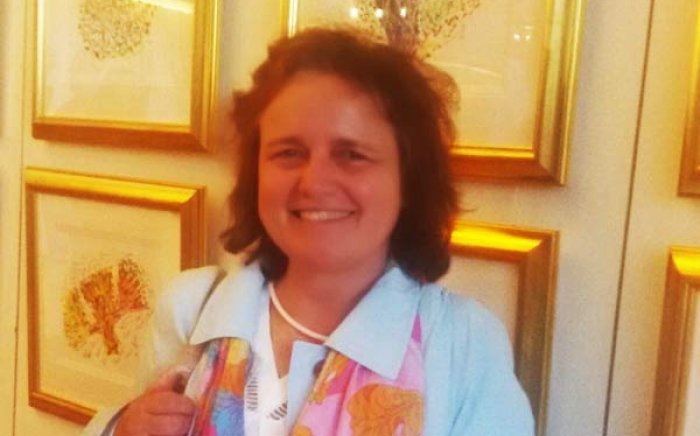
If a little meditation can give you this kind of experience...
Pragya Gerig Nuremberg, Germany
Listen to the inner voice
Vidura Groulx Montreal, Canada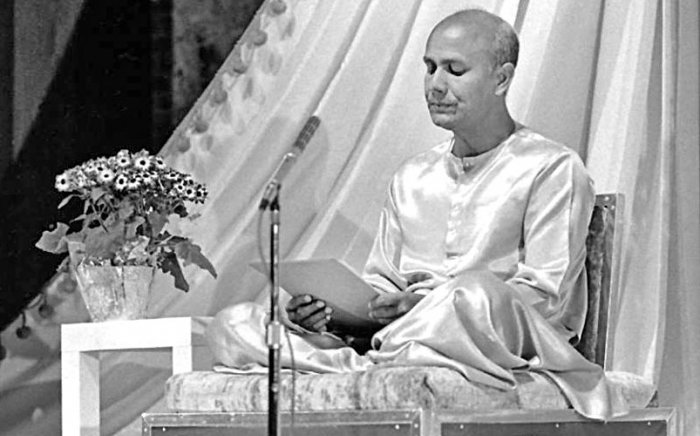
Meeting Sri Chinmoy for the first time
Janaka Spence Edinburgh, United Kingdom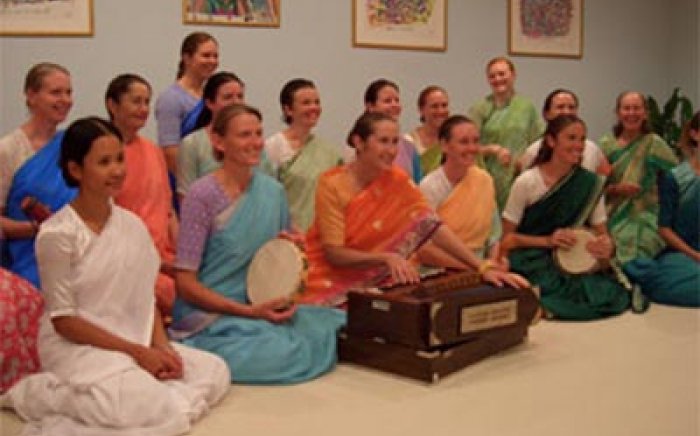
Spiritual Friends
Preetidutta Thorpe Auckland, New Zealand
I see infinitely more than I say
Agraha Levine Seattle, United States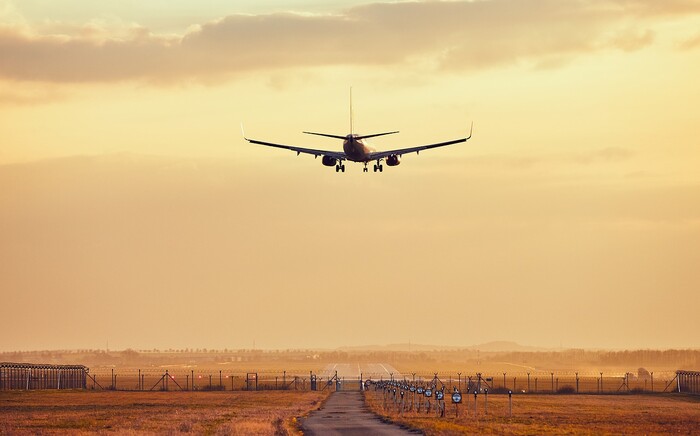
“Where there is heart, always there is a way.”
Jogyata Dallas Auckland, New Zealand
'When you perform for me, always choose devotional songs.'
Gunthita Corda Zurich, Switzerland
The Impact of a Yogi on My Life
Agni Casanova San Juan, Puerto Rico
Running for Peace
Jogyata Dallas Auckland, New Zealand
In the Whirlwind of Life
Pradeep Hoogakker The Hague, Netherlands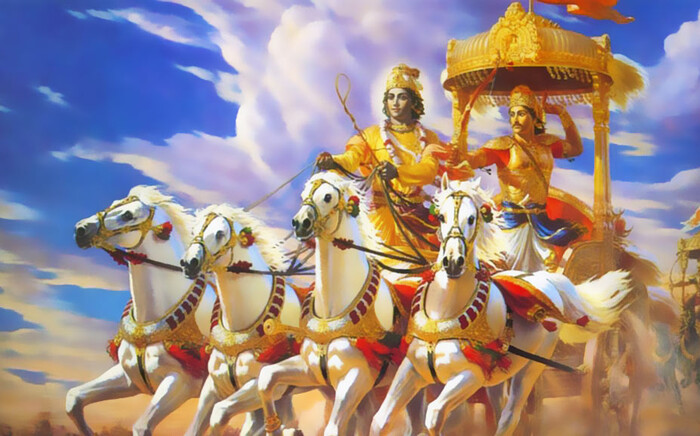
'You have to be like a warrior and fight'
Mahiyan Savage San Diego, United States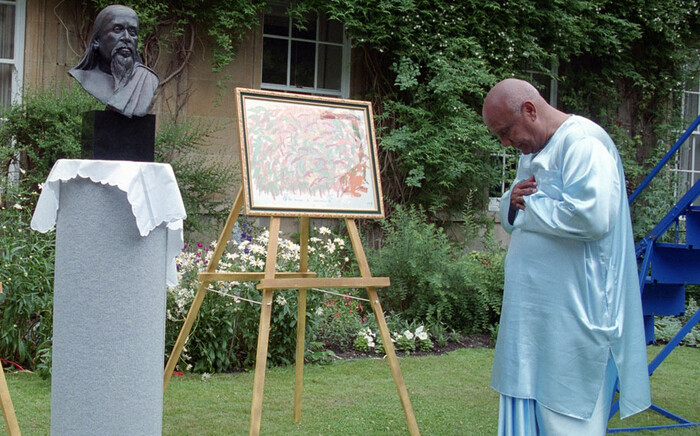
Our Guru becomes the perfect disciple
Devashishu Torpy London, United Kingdom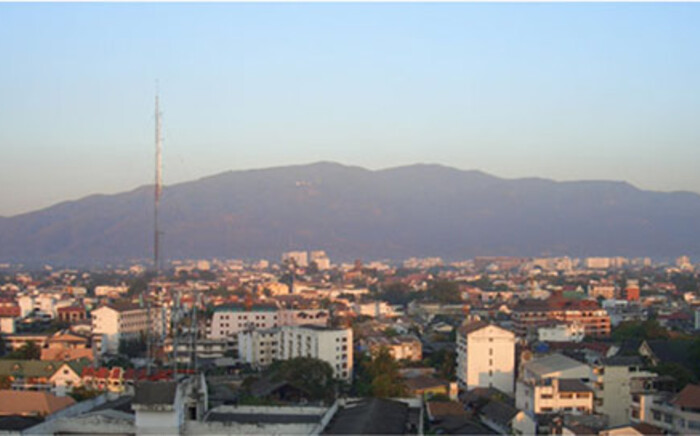
A Mountain Meditation
Jogyata Dallas Auckland, New ZealandSuggested videos
interviews with Sri Chinmoy's students
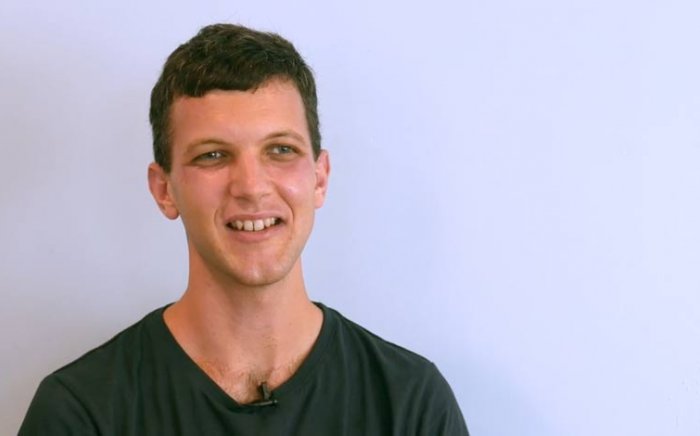
What drew me to Sri Chinmoy's path
Nikolaus Drekonja San Diego, United States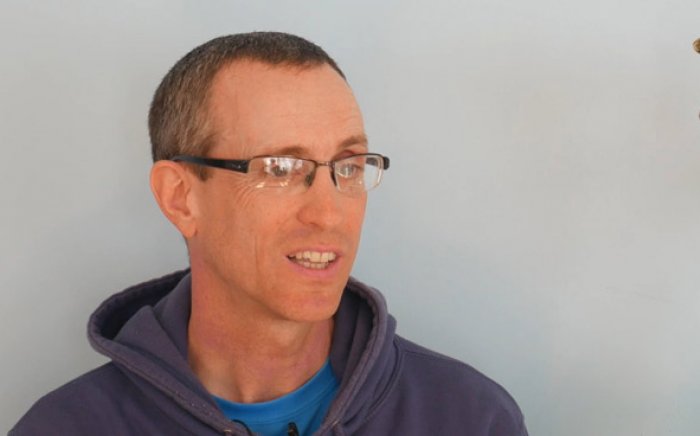
The value of meditation in a stressful job
Garga Chamberlain Bristol, United Kingdom
How can we create harmony in the world?
Baridhi Yonchev Sofia, Bulgaria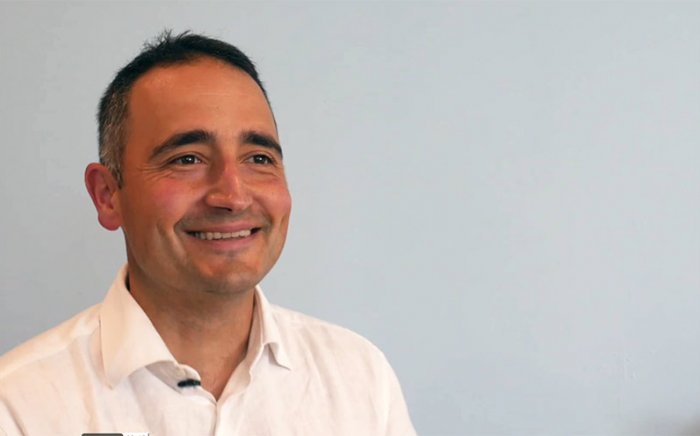
When I met Sri Chinmoy for the first time
Baridhi Yonchev Sofia, Bulgaria
Why we organise ultra-distance events
Subarnamala Riedel Zurich, Switzerland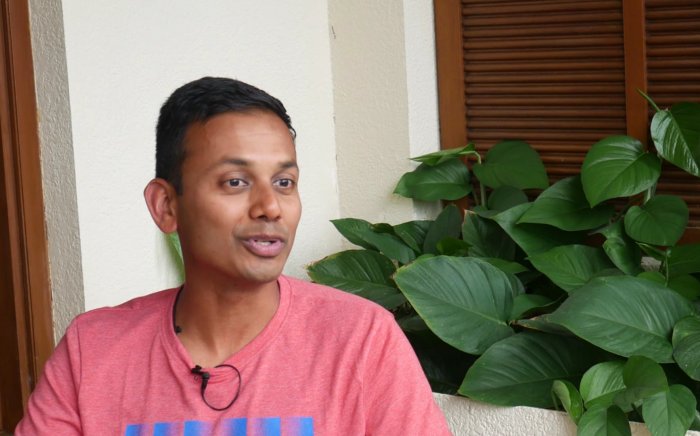
From religion to spirituality
Muslim Badami Auckland, New Zealand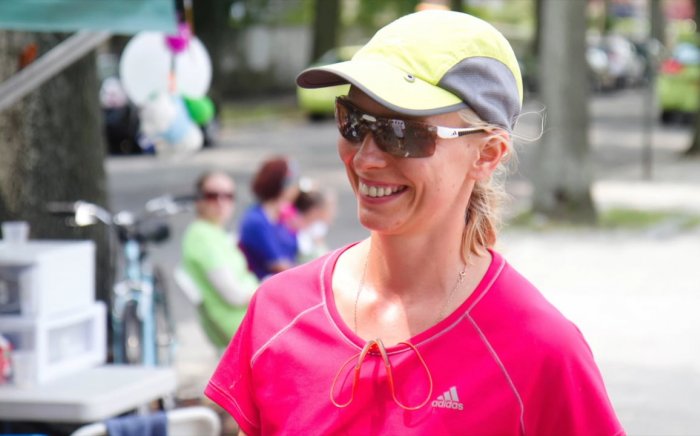
Running the world's longest race
Jayasalini Abramovskikh Moscow, Russia
Except where explicitly stated otherwise, the contents of this site are licensed under a Creative Commons Attribution-NonCommercial-NoDerivs 3.0 Unported License. read more »
SriChinmoyCentre.org is a Vasudeva Server project.


 /welcome
/welcome /welcome
/welcome /welcome
/welcome /welcome
/welcome /welcome
/welcome